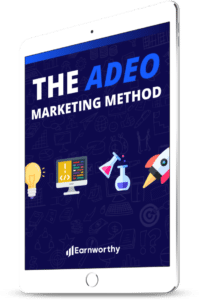For some, the word “bot” and the term “artificial intelligence” resurrects memories of Skynet – the evil AI that tries to take over the world in The Terminator movie franchise. If that’s you, don’t panic, bots won’t be taking over humanity anytime soon. In this article, you’ll discover how to use chatbots for marketing in ways that benefit customers and the business.
What is a chatbot?
Chatbots are powerful marketing tools that allow a business to streamline customer engagement processes and increase engagement capacity. Chatbots simulate human interaction through a pre-programmed set of actions or rules. Having one can save your organization time and money, providing that the use case and overall setup are sound.
Modern chatbots are more sophisticated, going beyond simple interactions to more AI-driven communications. These bots use natural language processing (a subset of AI) to power interactions, making it possible to automate even more business activities. Further, you don’t have to be a genius programmer to build a chatbot. No-code chatbot builders such as Landbot allow any organization or individual to develop sophisticated chatbots.
Here are multiple ways of using chatbots for marketing.
Live chat communication via your website
A study by J.D. Power found that live chat is the leading digital contact method for online consumers, with 42 percent preferring it over others. Twenty-three percent of people preferred email, while 16 percent favored social media or forums.
The study illustrates the demand for live chat, but offering it to prospects and customers requires a significant number of resources. Thankfully, a chatbot can handle all communications through your website and reduce the number of employees required to offer live chat.
Chatbots can answer questions (including FAQ) from interested prospects about your products and services and handle more inquiries simultaneously without fatigue. That means every customer or prospect is prioritized, decreasing wait times and the potential of losing sales opportunities.
Personalized shopping experiences
Personalized interactions can improve your conversion rate. Consider how different a conversation tends to become when someone refers to you by name. Mr. Dale Carnegie put it best in his book, How to Win Friends and Influence People, when he wrote: “A person’s name is to him or her the sweetest and most important sound in any language.”
Modern chatbots can integrate with social media to gather data about prospects and use that information during interactions. For example, the bot can interact with most users by name and offer shopping advice based on an individual’s historical data. Plus, modern chatbots are conversational.
One of the latest breakthroughs in conversational AI chatbots is Meena by Google. Meena can conduct conversations that are hard to discern from human conversations.
Qualify leads
You can use chatbots to qualify leads. You’ll need to program sets of questions to identify where the consumer fits on the sales funnel (awareness, interest, decision, or action phase). In many cases, people won’t know a bot is handling the conversation, but how you use a chatbot to qualify leads will depend on your business. For example, some companies use bots to set appointments for consultations. Others collect the prospect’s phone number for a callback.
Nurture leads
Besides qualifying leads, you can use chatbots for lead nurturing – specifically, as a gateway to more communications in the future. You can collect email addresses, adding each person to a nurturing sequence based on responses to pre-qualifying questions.
Integrate chatbots with messaging programs
Many chatbots can integrate with messaging platforms, such as Facebook Messenger, Slack, and Skype. For most businesses, Facebook Messenger is the obvious choice for bot integration. After all, Facebook is the biggest social network in existence with more than 2.7 billion monthly active users (MAU). Findings by Geo Marketing suggest that people exchange two billion or more messages with businesses on Facebook Messenger every month.
Messaging apps are already a great way for businesses to attract leads. When you add a chatbot to the mix, qualifying those leads will become much easier.
Use bots to sell products
Consider using chatbots to sell products if you operate an eCommerce brand. The bot can interact with consumers, asking standard questions to lead each individual to the product desired. However, you’ll need to set things up very carefully and include a fallback in case your chatbot fails to direct a consumer properly.
Ideally, conversational bots with a high Sensibleness and Specificity Average (SSA) score are best. Chatbots with high SSA scores can hold human-like conversations.
Image Source: Google AI
Explore chatbots
Chatbots represent an opportunity for companies to increase customer engagement capacity, lead acquisition, and reduce cost. While it takes some time to get set up initially, the investment is often well worth it. The chatbots of the future will go beyond answering questions and carrying out simple conversations. These bots will sound, think, and derive insights from data much like human beings.
If you’re looking to deploy a chatbot for your own brand and need some help, you can learn more about our chatbot development services here.





